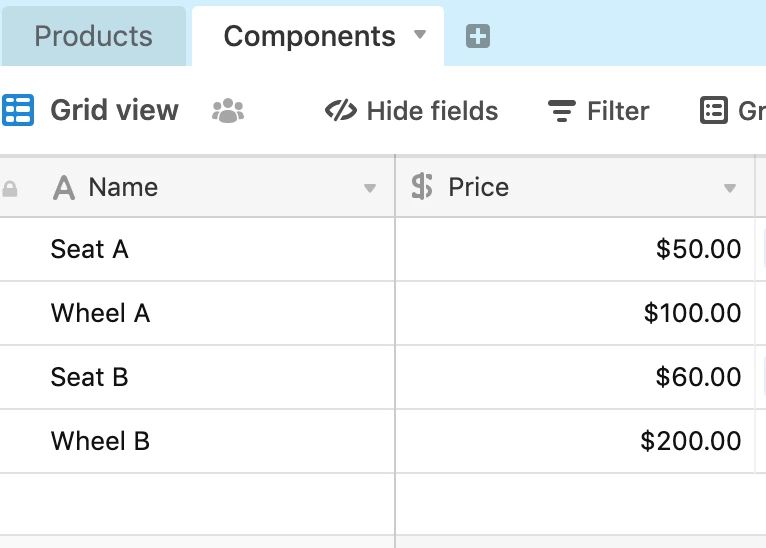I’m creating a table to help develop products. I would like to have certain parts determine pricing. So if I’m creating bikes for example - each type of seat or wheel will affect the price.
Example:
Seat A = $50
Seat B = $10
Wheel A = $100
Wheel B = $200
Seat A + Wheel B = $250
Seat B + Wheel A = $110
The real one would have several more options, but that’s the main idea.
Ideally there would be a “Wheel” field where you could choose A or B. Same with a Seat field. The Pricing would then calculate the total of whatever configuration you’ve chosen.
Thanks for any help!



